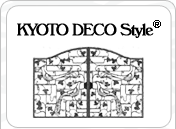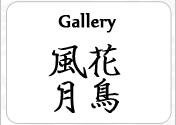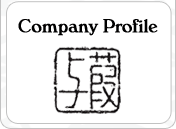
The civilization which developed in the Middle East split as the people migrated, one group moving West and the other moving East. Those moving to the West passed through Greece, then Rome before moving into Europe where they spread out across the continent. On the other hand, those moving East passed along the Silk Road into China, then onward to the Korean peninsula, and finally arriving in Japan.
This trend is particularly evident when following the influence and development of the decorative and ornamental artistic culture, which the people brought with them. For example, one representative example in wrought iron is the design motif of the scroll, which after being handed down for generations remains unchanged even today in both Eastern and Western culture. Furthermore, in Europe the design is called “Arabesque,” and in Japan, it is called “Karakusa” (Chinese grass). This interesting point demonstrates the pathways that the transmission of culture took in both directions.
One important thing that needs to be mentioned, however, is that Japan was the final stopping point for the Eastern migration of decorative culture. To the East of Japan lies only the vast, Pacific Ocean which at that time could not be crossed.
This unique, geographic condition would later have a very strong influence on the formation of Japanese decorative culture.
The influx and gradual accumulation of culture from the West fostered diversity and a unique,artistic identity. During the Asuka, Nara, and Heian periods (7th~12th centuries), ornamental culture was primarily influenced by Chinese patterns and designs. Later, as Kyoto became the political and cultural center of Japan in the Muromachi and Azuchi-Momoyama periods (14th~16th centuries), an original, unique Japanese ornamental culture developed, encompassing virtually all of the traditional arts and crafts including paintings, weaving, dyeing, lacquer-ware, and pottery.

As Japan moved into the 17th century, the political center moved to Edo (present-day Tokyo) and the country was shut off from the rest of the world. Kyoto remained the cultural center, however, and with the activities and development of artistic movements of world renown centering around the Rinpa school of painting, Japanese decorative artistic culture blossomed and approached perfection.
Trends in Edo saw the development of a new form of woodblock prints called Ukiyo-e, which became very popular among the common people. At the same time, although an edict had been given by the shogunate rulers that Japan was to remain closed to the outside world, limited trade and exchange began with Europe, where Japanese decorative artwork is said to have become so highly acclaimed that it heavily influenced not only the art nouveau and art deco movements, but even the French impressionist movement.
It is extremely interesting that while Japan is geographically positioned as the eastern stopping point for the spread of Mesopotamian influenced decorative culture, centuries of development resulted in
decorative arts that were uniquely Japanese, which in turn were incorporated into the artistic cultures of the West.
We at Yoshiyo Studios would now like to introduce Japanese decorative artistic culture to the United States, the final gathering place for all the cultures of the world, whether they migrate from the East or West.








